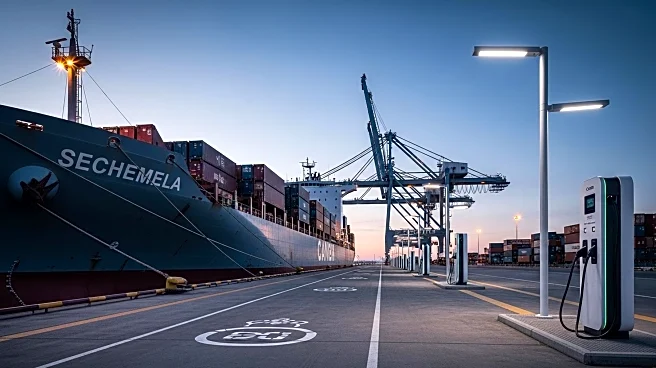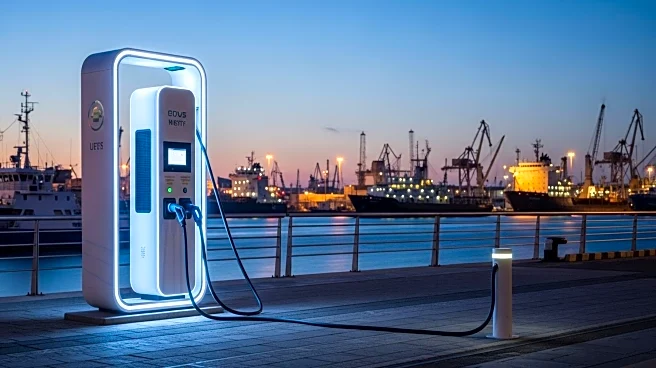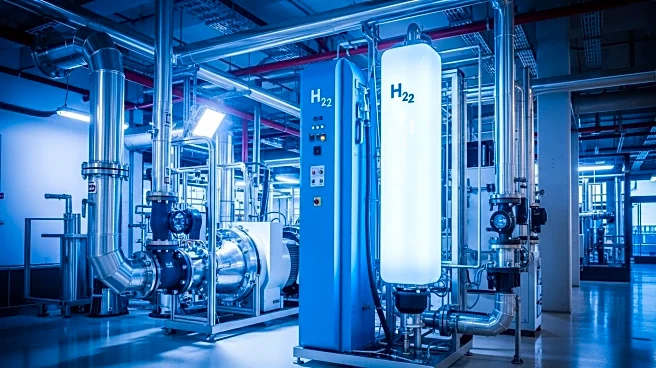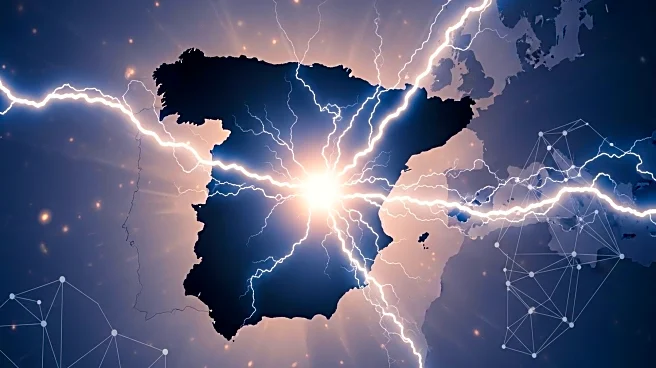What's Happening?
European ports are increasingly being recognized as vital components in the continent's decarbonization efforts. The EU's Fit for 55 package mandates a 55% reduction in greenhouse gas emissions by 2030, emphasizing the need for electrification of port operations and provision of shore power. Ports are crucial interfaces between maritime, road, and rail transport, making them indispensable to Europe's logistics system transition. The concept of sustainable ports is emerging, highlighting their role as energy nodes integrating renewable energy and charging solutions. However, financing models and governance structures are misaligned with the scale of the challenge, posing significant hurdles to achieving these goals.
Why It's Important?
The electrification of ports is essential for reducing emissions from shipping, which accounts for around 3% of global CO2 emissions. Port operations contribute significantly to these emissions, with activities such as maneuvering and berthing accounting for 12-20% of total transport emissions in certain corridors. The transition to sustainable ports is not only a regulatory requirement but also a societal necessity. Without adequate funding and collaboration, Europe risks creating a two-tier system of ports, where some comply and attract cargo while others fall behind, potentially fragmenting the continent's decarbonization strategy.
What's Next?
To address the financing dilemma, ports must explore new business models for energy provision, such as network fees for internal grids and joint procurement. Collaboration among ports is crucial to present a unified position to regulators and financiers, ensuring access to funding on equal terms. National governments and the EU should shoulder a greater share of the financial burden, aligning funding with legal mandates. Without predictable, large-scale funding, the electrification of ports risks stalling, undermining Europe's climate ambitions.
Beyond the Headlines
The electrification of ports is not just a technical challenge but a regional energy challenge. Grid capacity is a hidden constraint, requiring parallel investments in local electricity networks. Ports must coordinate with grid providers to ensure distribution capacity matches electrification plans. The sustainable port concept positions ports as energy nodes, integrating logistics with energy distribution, and enabling them to become decarbonization enablers and system integrators.










